Processing Your Payment
Please do not leave this page until complete. This can take a few moments.
- News
-
Editions
View Digital Editions
Biweekly Issues
- November 17,2025
- November 03, 2025
- October 20, 2025
- October 6, 2025
- September 22, 2025
- September 8, 2025
- + More
Special Editions
- Lists
- Viewpoints
-
Our Events
Event Info
Award Honorees
- Calendar
- Biz Marketplace
American Aquafarms CEO talks about industry's future as wild marine stocks decline
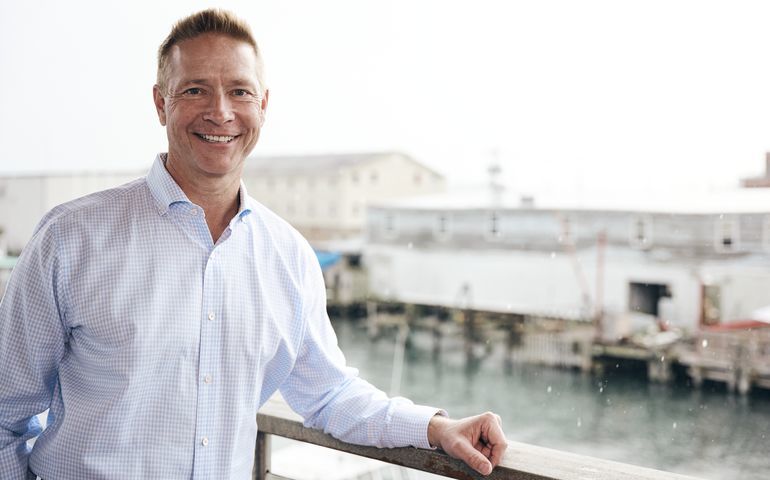 COURTESY / AMERICAN AQUAFARMS
Keith Decker, American Aquafarms' new CEO, says large-scale farming of Atlantic salmon would help keep working waterfronts working as wild fisheries decline.
COURTESY / AMERICAN AQUAFARMS
Keith Decker, American Aquafarms' new CEO, says large-scale farming of Atlantic salmon would help keep working waterfronts working as wild fisheries decline.
American Aquafarms, a Norwegian company that hopes to install a $300 million salmon farm in the waters of Frenchman Bay, recently announced the appointment of Keith Decker the company's CEO, based in the U.S.
Decker is a 30-year industry veteran with experience in seafood production and processing, with leadership roles in some of the largest North American seafood companies. He’s a board member and investor in an Oslo, Norway, company that plans to build and operate an industrial scale land-based Atlantic salmon operation outside of Reno, Nev.
American Aquafarms proposes to lease 120 acres in Frenchman Bay, between Bar Harbor and Schoodic Peninsula, to install 30 “closed pens” and produce 66 million pounds of salmon annually, and to install a hatchery and processing facility in Gouldsboro.
Mainebiz asked Decker what drew him to the firm and about his plans going forward.
Here’s an edited transcript.
Mainebiz: Where were you up to now?
Keith Decker: For 17 years in New Hampshire I ran High Liner Foods, the largest manufacturer of value-added seafood in North America. At the peak, I had seven manufacturing plants and 2,000 employees. Then for the last four years, I was building and running the largest groundfish fishing company on the East Coast, Blue Harvest Fisheries LLC, headquartered in New Bedford, Mass.
I’m in the process of moving to Maine.
MB: What drew you to American Aquafarms?
KD: A couple of people from American reached out to me.
What I’ve seen through my career is what I believe is the need to onshore our seafood production and rebuild our production capacity on the East Coast and throughout the United States. As a country, we import about 90% of our seafood. Five of the top eight species we consume are farm-raised and, effectively, the majority of it is grown globally and either air-freighted into the United States or put onto container ships to the United States. One thing that’s become really evident, over the last 18 months, is that COVID has exposed our global supply chain problems, not to mention climate change issues of flying seafood to the United States.
I’ve been interested in farm-raised salmon, kelp, oysters and other species — I think that’s a fantastic industry that will only continue to grow.
MB: How does your skillset working with wild fisheries translate to aquaculture?
KD: High Liner Foods is one of the largest seafood importers in North America. I spent quite a bit of time importing and sourcing aquaculture products globally. Being an importer of those products and traveling to those locations, you have an appreciation for the scale of the industry, and also of the challenges of supply chains into the U.S. market.
MB: What’s your vision for American Aquafarms?
KD: Assuming we can get the permits, I’d see us building the salmon farm and putting the fish in the water, building a hatchery and a processing plant, and creating a long-term industry and jobs for the working waterfront of Maine.
MB: Why is this important?
KD: I’ve seen through my career the decline in the natural resources in the Gulf of Maine — groundfish, shrimp and now the lobster catch is declining. The question that should be asked is, what is going to replace those industries and how can that be beneficial to the people who have made their livelihoods with those fisheries for the last hundred years? Knowing that those are very lucrative fisheries that drive tremendous economic opportunities to the state, you’re not going to be able to replace that with small, local aquaculture operations. There has to be some scale.
In the future, if you want to have opportunities for younger people who are growing up — where are they going to work? Do we want an outflow of our talent leaving the state? Or do we want to have good, long-term, well-paying jobs for them? This particular project will produce a few hundred well-paying, long-term jobs.
MB: The proposal has substantial local opposition. How do you plan to engage with opponents?
KD: We have started our outreach to address concerns and to work with local communities. Our goal is to provide factual information, go through the rigorous process set up by the state and federal governments when it comes to permitting, but also listen to people in the communities.
At the end of the day, this is going to be a local company that is trying to become part of the community. We want to listen to everyone’s concerns and take them into consideration as much as possible.
MB: Opponents cite expected discharge of 4.1 billion gallons of untreated effluent pumped from the proposed site. What’s your response to that concern?
KD: I believe there are currently 24 farms permitted by the state with traditional open pens. We propose bringing the best technology in the world for farming salmon that, I believe, addresses almost every major problem at open sites. It eliminates challenges with algae bloom, oxygenation, disease, sea lice, escapements and waste. We’re going to collect the waste as it falls to the bottom of the pen, which is inside an impermeable membrane bag, pumped to the surface, collected on a barge, dewatered, and turned into biofuel or fertilizer.
As far as 4 billion gallons — we’ll collect more than 90% of the solids, and some of the newer variations are even more efficient.
Go back 50 or 100 years ago. There were massive fish populations in the Gulf of Maine that every day produced effluent. If we have an active healthy fish population, wouldn’t they be producing waste?
MB: How do you respond to concerns about views, lights, noise, etc.?
KD: We’ve done everything we think is possible to make this as unobtrusive as possible. The pens will only sit 3 feet above the water. We’ve chosen a muted palette. We have done everything in our power to reduce the amount of sounds and light.
MB: And how do you respond to concerns around the risk of fuel spills?
KD: Like most vessels and fishery equipment used on Frenchman Bay, we will need to use some sort of energy to power our operations. We have identified diesel as the most likely initial option for use in our quiet and energy-efficient pumps, but we are working hard to find ways to source and employ a mix of energy sources including solar, natural gas or electricity derived from green generation. These energy sources are exciting, but supply and distribution options are currently under development. We're doing all we can to collaborate with organizations like the University of Maine to devise the best way to power off-shore operations, and we're hopeful by the time we are fully permitted, built and underway that new options are available. If, at first, diesel is the most viable option for us to use, we will employ every safety precaution available to prevent spills or other contamination to Frenchman Bay just like all those who currently use fossil fuels to power transportation and fishing on the water.
MB: Next steps?
KD: If we were to get our permits in February, I think we’d be putting fish in the water in the first quarter of 2023. The first harvest would be 2024.
Mainebiz web partners
Mr. Decker has no experience with fish farming doesn't indicate any knowledge related to the particular sites and does not acknowledge that the technology is actually untested therefore not proven "best." The outreach seems to be a PR effort rather than an effort to actually address the detailed concerns which have been raised.

The Giving Guide
The Giving Guide helps nonprofits have the opportunity to showcase and differentiate their organizations so that businesses better understand how they can contribute to a nonprofit’s mission and work.
Learn More
Work for ME
Work for ME is a workforce development tool to help Maine’s employers target Maine’s emerging workforce. Work for ME highlights each industry, its impact on Maine’s economy, the jobs available to entry-level workers, the training and education needed to get a career started.
Learn More
Groundbreaking Maine
Whether you’re a developer, financer, architect, or industry enthusiast, Groundbreaking Maine is crafted to be your go-to source for valuable insights in Maine’s real estate and construction community.
Learn more-
The Giving Guide
The Giving Guide helps nonprofits have the opportunity to showcase and differentiate their organizations so that businesses better understand how they can contribute to a nonprofit’s mission and work.
-
Work for ME
Work for ME is a workforce development tool to help Maine’s employers target Maine’s emerging workforce. Work for ME highlights each industry, its impact on Maine’s economy, the jobs available to entry-level workers, the training and education needed to get a career started.
-
Groundbreaking Maine
Whether you’re a developer, financer, architect, or industry enthusiast, Groundbreaking Maine is crafted to be your go-to source for valuable insights in Maine’s real estate and construction community.
ABOUT
NEW ENGLAND BUSINESS MEDIA SITES
No articles left
Get access now
In order to use this feature, we need some information from you. You can also login or register for a free account.
By clicking submit you are agreeing to our cookie usage and Privacy Policy
Already have an account? Login
Already have an account? Login
Want to create an account? Register
Get access now
In order to use this feature, we need some information from you. You can also login or register for a free account.
By clicking submit you are agreeing to our cookie usage and Privacy Policy
Already have an account? Login
Already have an account? Login
Want to create an account? Register
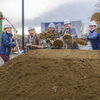
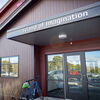
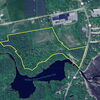


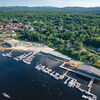

3 Comments